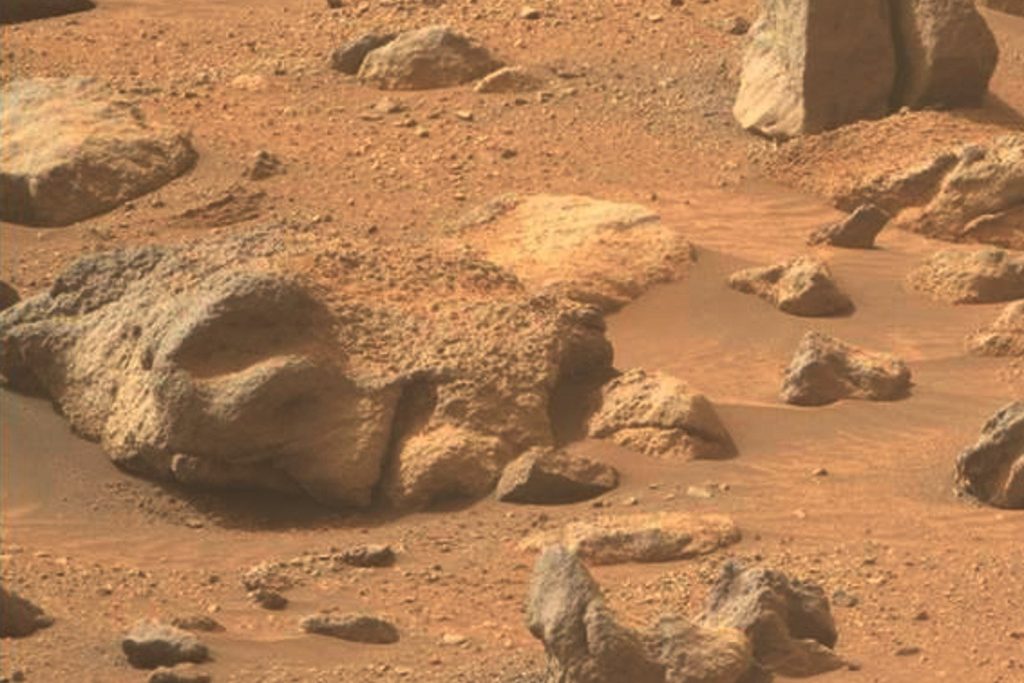
The Latest ‘Face’ on Mars Is the Most Dramatic Yet (Image Credit: Gizmodo-com)
For years, NASA’s six-wheeled robots have roamed the Martian terrain, collecting precious data and capturing images of their journey. Every now and then, something will appear in the photos that looks a little too familiar: a spoon, a donut, or a face that’s just really over it.
In a recent image taken by the Perseverance rover, a group of rocks appear scattered across Mars’ sandy landscape, and one of the rocks is just not having it. Appearing at the far left side of the photo is a peculiar-looking rock that resembles a face lying on its side, with carved out eyes, and a discernible nose and mouth. It’s a bit squashed, but the resemblance to a human face is undeniable.

Perseverance is currently trekking its way through Jezero Crater, a region on Mars that may have once been flooded with water. The NASA rover captured this image on September 27 using the camera perched on the right side of its mast.
Mars is a dry, cold desert world, and it has a lot of weird looking rocks. The planet is located next to the main asteroid belt and its atmosphere is only 1% as thick as Earth’s, which means that space rocks can easily travel through the Martian atmosphere largely unscathed and land in bigger pieces as opposed to disintegrating into smaller fragments through Earth’s atmosphere. That said, the majority of the rocks littering the landscape were shaped by volcanic activity, wind erosion, and ancient water flows that have long since dried up.
Earlier last month, Perseverance spotted a Zebra-stripped rock that the mission team nicknamed Freya Castle, after the famous summit in the Grand Canyon. In July, the rover found another animal-themed rock on Mars, one with a leopard-like pattern.
The sideways face is just the latest in a series of oddities spotted in Perseverance’s raw images of Mars, but the Red Planet is not entirely to blame for its strange rock collection. Sometimes, we tend to get a little carried away in trying to interpret what we see on another world, like a doorway-shaped rock formation, a human face emerging from the rocky surface of Mars, or in this case, a face that’s praying for the sweet relief of death.
Seeing faces in otherwise inanimate objects is due to a phenomenon known as pareidolia, a psychological illusion that causes our perception to impose a meaningful interpretation on insignificant stimuli.
Still, that doesn’t stop those who have fallen prey to pareidolia from coming up with alien theories to satisfy their brain’s interpretation. In 1976, NASA’s Viking 1 orbiter captured an image of a region on Mars called Cydonia, where a strange formation bore a resemblance to a human face. The black and white image spurred rumors of an ancient Martian civilization that had built a monument to the planet’s former inhabitants. Unfortunately, it was just a weird hill.





